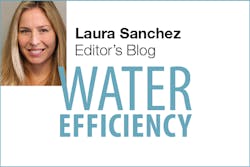Over 2 billion people live in countries experiencing high water stress according to a 2018 United Nations report. Water scarcity is a concern for communities on every continent. A new paper by researchers at the University of California, Irvine, analyzes “inflexible” water demand: usage dependent on water for social well-being and life. Among the essential usages are crop irrigation, cooling uses at power plants, and drinking water for both humans and livestock.
In order to ensure accuracy, the researchers developed a water stress index that helped them evaluate the scarcity, flexibility, and variability of water supplies on six continents from 1980 to 2016. During their analysis, they found targeted areas where a single climate incident such as a drought or heat wave could strain water sources and result in crisis. Researchers also discovered that the top 10% of the most stressed river basins support about 19% of the world’s population, 19% of thermal electricity generation, and one-third of irrigated agricultural production.
“Many studies evaluating water scarcity have mainly centered on the share of the available supply being consumed by humans, but this ignores the fact that some uses are more flexible or productive than others,” explained lead author Yue Qin, a University of California, Irvine postdoctoral scholar in Earth system science.
The team also identified opportunities to conserve water and energy and were able to pinpoint areas where programs would be especially impactful. “By looking at how water is actually used,” Qin explained, “we can begin to see what water is really difficult to do without and if there are any opportunities for savings in other areas.”
What are your impressions? Do you see evaluating water demand in terms of flexibility as a way of identifying water-insecure areas and developing solutions?
